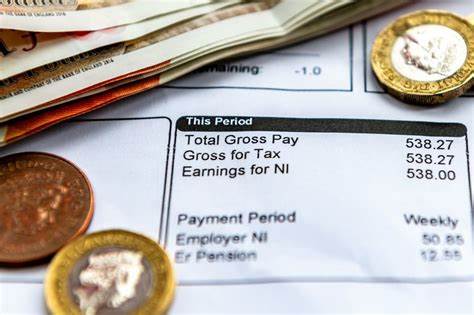27 million people across the UK will benefit from a yearly tax cut worth hundreds of pounds, meaning a household with two average earners will save nearly £1,000 per year.
The main rate of National Insurance has been cut by 2p from 12% to 10% from Saturday 6 January 2024. This reduces National Insurance by more than 15%, saving £450 this year for the average salaried worker on £35,400.
Millions of people working different jobs across hundreds of industries will now be better off. An average full-time nurse will save £520, a typical junior doctor £750 and an average teacher £630. In the past year, inflation has halved; the economy has recovered more quickly from the pandemic than first thought; and debt is on track to fall.
With a renewed focus on the long-term decisions to strengthen the economy, the government is changing gear and cutting taxes for hard working people, giving them the opportunity to build a wealthier, more secure life for themselves and their families. Prime Minister Rishi Sunak said: “We have made tough decisions on the economy, supporting people through global shocks such as the pandemic and Putin’s illegal invasion of Ukraine.
“It is because of the tough decisions this government has taken that today we are able to cut taxes for 27 million people across the UK. Today’s tax cuts will directly reward hard working people, putting £450 back in the pocket of the average worker and helping them make ends meet.”
Chancellor of the Exchequer Jeremy Hunt added: “With inflation halved, we’ve turned a corner and are cutting taxes – starting with today’s record cut to National Insurance worth nearly £1,000 for a household.
“From nurses and brickies to cleaners and butchers, 27 million hard-working Brits will have a little more cash in their pockets.” The cut means that for those on average salaries, personal taxes would be lower in the UK than every other G7 country, based on the most recent OECD data. The UK also has the most generous starting allowances for income tax and social security contributions in the G7.
To mark the tax cut, HMRC have launched an online tool to help people understand how much they could save in National Insurance this year. The tool will use salary information to give employees personalised estimates of how much they could save because of the government’s changes, and will be hosted on the government’s cost of living support website on gov.uk.
The last major cut to the current personal tax system of today’s magnitude was when the National Insurance personal allowance increased from £9,880 to £12,570 in July 2022. This was the largest ever cut to a personal tax starting threshold, allowing working people to hold on to an extra £2,690 free from tax whilst taking 2.2 million people out of paying tax altogether.
Today’s tax cut combined with above-inflation increases to tax thresholds since 2010 means that the average earner will pay over £1,000 less in personal taxes than they otherwise would have done. At the Autumn Statement the Chancellor Jeremy Hunt announced the biggest package of tax cuts to be implemented since the 1980s.
In addition to today’s action, the Chancellor also announced a National Insurance cut for 2 million self-employed people, which will take effect on 6 April 2024 and is worth £350 for the average self-employed person on £28,200. He also announced the biggest ever increase to the National Living Wage, effectively cut corporation tax by more than £55 billion as he made full expensing permanent to help businesses invest for less, froze alcohol duty for six months and extended cuts to business rates relief for the high street.
Today’s historic National Insurance cut takes effect following the government stepping in to support households during the Covid-19 pandemic and throughout Putin’s barbaric war in Ukraine. The government took the decision to manage the public finances responsibly by not saddling future generations to help pay down debt.











